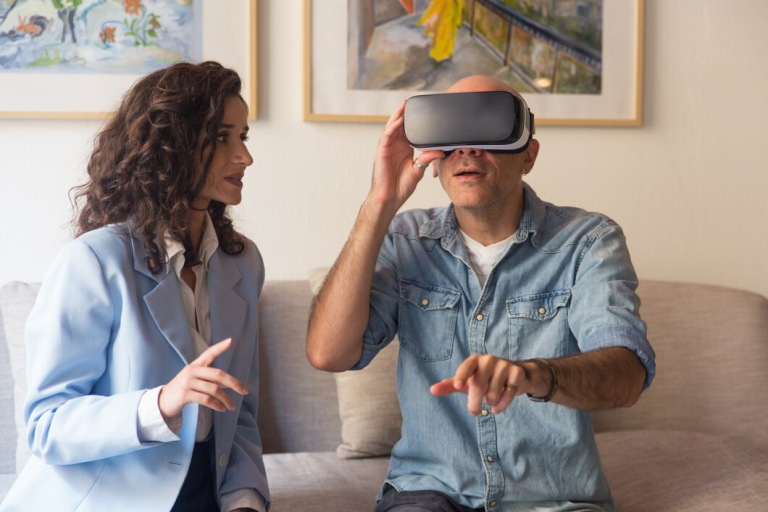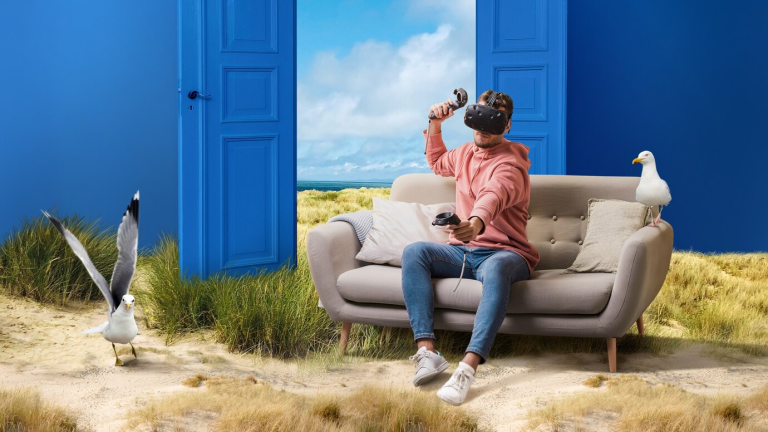Virtual Reality (VR) is revolutionizing architectural design, transforming the way architects, clients, and construction teams visualize and collaborate on projects. As this cutting-edge technology continues to evolve, it promises to reshape the industry, making processes more efficient, immersive, and precise.
If you’re curious about how VR is shaping the future of architecture or you’re ready to embrace this innovation in your projects, this comprehensive guide is for you.
1. What is Virtual Reality in Architecture?
In architecture, VR involves creating immersive, 3D digital environments that allow users to experience and interact with building designs before they are built. Using VR headsets and software, architects and clients can walk through spaces, evaluate design elements, and make real-time adjustments.
Why it matters: VR enables stakeholders to experience designs as if they are physically present, bridging the gap between imagination and reality.
2. Enhancing Design Visualization
Traditionally, blueprints and 2D renderings have been the cornerstone of architectural presentations. With VR, clients can now step inside a virtual model of their future building and explore every detail.
Statistics That Matter:
- Clients who use VR report a 40% higher satisfaction rate compared to those relying solely on traditional renderings.
- VR reduces design errors by up to 60%, saving time and money during construction.
Example in Action:
VRchitects recently used VR to showcase a commercial complex to stakeholders. The ability to virtually walk through the building enabled real-time feedback, resulting in a 20% reduction in design revisions.
3. Improving Collaboration and Communication
One of the most significant benefits of VR is its ability to improve collaboration between architects, engineers, and clients. With VR, teams can:
- Identify design flaws early in the process.
- Simulate how different materials, lighting, or furniture will look in the final design.
- Make instant adjustments to satisfy client preferences.
Fact: Projects that use VR experience a 25-30% improvement in collaboration efficiency, according to industry studies.
4. Cost and Time Efficiency
VR enables architects to identify potential issues before construction begins, preventing costly mistakes and delays. Real-time visualization allows clients to make informed decisions faster, streamlining project timelines.
Key Insights:
- Projects that utilize VR report a 15% reduction in material waste.
- Construction timelines improve by 40% due to fewer revisions and improved planning.
Pro Tip: VRchitects helps clients leverage VR to optimize budgets and timelines, ensuring every dollar is spent wisely.
5. VR and Building Information Modeling (BIM): A Perfect Pair
The integration of VR with Building Information Modeling (BIM) has taken architectural design to a new level. By combining the data-rich environment of BIM with the immersive experience of VR, architects can:
- Simulate real-world conditions like lighting, acoustics, and structural integrity.
- Navigate complex projects with unparalleled precision.
Fact: BIM combined with VR has been shown to increase design accuracy by 35%, minimizing errors during construction.
Real-World Example:
VRchitects used VR-BIM integration to design a mixed-use development, allowing engineers to test structural changes in real time. This reduced engineering costs by 12%.
6. Applications in Sustainable Design
Sustainability is at the forefront of modern architecture, and VR is playing a vital role in creating eco-friendly designs. Using VR, architects can:
- Simulate energy efficiency, airflow, and sunlight exposure.
- Test the environmental impact of materials and design choices.
Fact: Sustainable designs created with VR result in 20% lower operational costs for buildings.
7. What’s Next for VR in Architecture?
The future of VR in architecture is filled with exciting possibilities. Emerging trends include:
- Virtual Reality Showrooms: Allowing clients to explore a catalog of design options in immersive environments.
- Remote Consultations: Connecting architects and clients worldwide through shared VR spaces.
- Smart City Planning: Using VR to simulate and optimize urban infrastructure.
Growth Forecast: The global VR market in architecture is expected to grow to $5.2 billion by 2030, driven by advancements in hardware and software.
Why Choose VRchitects for VR-Driven Design?
At VRchitects, we are pioneers in integrating Virtual Reality into architectural projects. Our team leverages cutting-edge VR tools to:
- Deliver immersive client presentations that simplify decision-making.
- Create precise, error-free designs with minimal revisions.
- Optimize workflows for faster and more cost-effective project delivery.
Whether you’re planning a commercial complex or a residential project, VRchitects can bring your vision to life with unparalleled clarity and precision.
Final Thoughts
The future of architectural design lies in the immersive power of Virtual Reality. With its ability to enhance visualization, streamline workflows, and reduce costs, VR is no longer a luxury—it’s a necessity for staying competitive in the modern architectural landscape.
Are you ready to step into the future of design? Contact VRchitects today to explore how VR can transform your next project.






